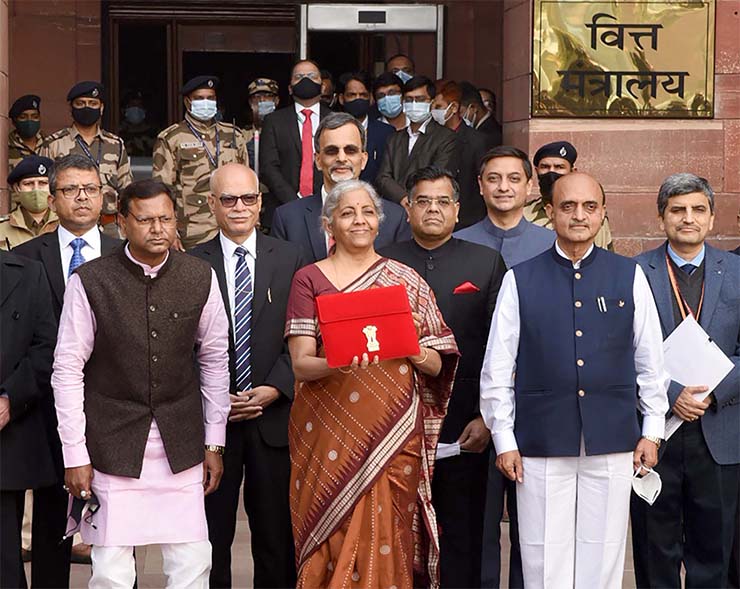Significant Expectations
As the general budget will be presented in the parliament today, significant expectations are riding on the defence segment. The country has seen some steady growth as far as defence outlay is concerned. In the last decade, there has been a cumulative rise of 49 per cent from $ 47.22 billion earmarked in 2012 to $ 76.6 billion in 2022 but in percentage terms of GDP, it is only a 0.3 per cent rise. However, in the case of India as against its running adversaries Pakistan and China, the budgetary allocations are highly transparent mechanisms. Whereas, in the case of China barring transparency everything else can be expected while for Pakistan the country has been shrouded by an economic crisis but its military masters are known to have drawn a much huger almost irrational chunk of national resources for the defence sector than a nation of Pakistan’s economic size can afford. The percentage of GDP allocation to defence in Pakistan is about 4.4 per cent whereas, for major military powers like the US, it stands at 3.3 per cent, 2.6 per cent for Russia and 1.3 per cent for China. It only amplifies the irrationality of the dispensation in Pakistan and is probably one of the major factors why Pakistan is where it is now and is unlikely to see any alteration in its approach in near future.
Evolving Challenges
Indian defence allocations have many aspects intertwined and have to cater for a plethora of requirements. Not that allocations to MoD go entirely into high-value procurements, in real quantified terms it is much lesser. If the previous year’s allocations are seen, only 24 per cent of $ 70.6 billion was earmarked for capital procurements or purchasing of weapons, ammunition and related services. This year too, the trend is likely not to be any different. However, the security challenges surrounding India, especially since Galwan in 2020 and now in Yangtse, have magnified manifold.
The China factor which till then was a dormant subject in security calculus has become a major bugbear. The actions by the government are reflective of a proactive approach with three emergency procurements announced since 2020 with the latest one in August 2022. It appears that services have briefed the policymakers fully about the criticalities and developing scenarios and the government is expected to be living up to the projections. It must not also lose sight of the steps China is envisaged to take.
The Nay Sayers
At present, China has the second largest defence budget pegged at $ 230 billion after the US. Recent developments in the contested waters of the Taiwan straits coupled with the clear challenge of the US to China’s claims in the South China Sea, and the emergence of AUKUS and QUAD have all added up to China’s strategic concerns. It is most likely to push China’s defence expenditure further upward and clearly much higher than what India may finally invest.
This may be a matter of argument for advocates of keeping India on a minimalist approach as in any case competing with China is ‘unrealistic’ and at the cost of the social welfare of the state. Such people need to be corrected with a factual state of mutual disparity between China and the US in terms of defence expenditure. As US spending touches almost $720 billion, China’s budget is only $230 billion, a third of what the US is doing, on the other hand, India’s spending as compared to China is also a third almost.
But then look at the geostrategic weight that China is exerting over the sole superpower, that is simply because in security parlance strength is not only measured by what one country is spending on defence but more importantly what strength it can bring to battle at the place and time of conflict. This is where the fight is, and China achieves that strength in its extended neighbourhood. India too enjoys a similar matrix in its borders with China. It is an appreciated fact that the contest is of equals in the sector where China is attempting to force its way against India. That is the reason why India must improve its preparedness to effectively counter the Chinese across its land boundary.
What is Expected
What India needs is a clear enhancement in defence expenditure addressing major concerns of the three services. At least bringing it to 3 per cent of GDP from the current 2.9 per cent, which would roughly translate into $ 111 billion as per India’s projected GDP for FY 2022-23. Even the sub-allocation by the MoD should prioritise the Indian Air Force as they have the biggest stake in the domination across the LAC. It wouldn’t be an exaggeration to highlight that IAF holds the key to battle in the Himalayas. The second in prioritisation should be the Indian Navy as the integration with multilateral security mechanism demands increased naval component and also to push Naval operations across the Pacific and Arabian Sea. India is countering a highly dynamic security threat at present and the need is to take this challenge head-on with appropriate budgetary provisions.
–The writer has varied experience in security paradigm and is a keen follower of international geopolitics. He is also the author of popular blog site (geostrat.in) on geo-strategic affairs. The views expressed are personal and do not necessarily reflect the views of Raksha Anirveda









